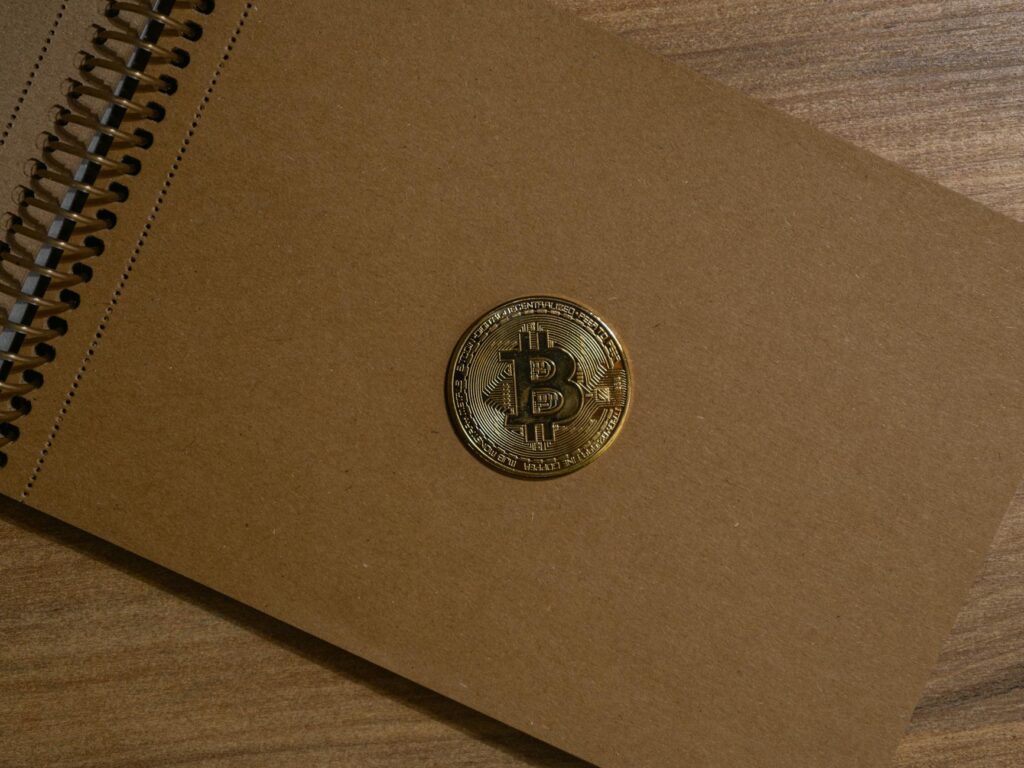That Sinking Feeling: Your Guide to Surviving a Crypto Bloodbath
Let’s be real. Your heart pounds. Your stomach drops. You refresh your portfolio for the tenth time in five minutes, and the sea of red just gets deeper. Every fiber of your being is screaming, “SELL! SELL NOW BEFORE IT GOES TO ZERO!” This, my friend, is the siren song of panic selling. It’s a primal, emotional response to seeing your hard-earned money seemingly evaporate. The good news? You can resist it. Learning to avoid panic selling is not just a useful skill; it’s the dividing line between those who build wealth in crypto and those who get wrecked. This isn’t just about ‘having diamond hands.’ It’s about having a brain, a plan, and the fortitude to stick to it when things get scary.
Key Takeaways:
- Panic selling is an emotional reaction, not a strategic one. It’s almost always the wrong move for long-term investors.
- Having a pre-defined investment plan with entry, exit, and profit-taking targets is your single best defense against fear.
- Techniques like Dollar-Cost Averaging (DCA) can turn a frightening market correction into a strategic buying opportunity.
- Understanding the fundamental value of your assets and zooming out to a long-term chart provides crucial perspective.
- Disconnecting from the constant stream of price alerts and FUD (Fear, Uncertainty, and Doubt) is vital for your mental health and your portfolio’s health.
Why Your Brain Is Hardwired to Panic Sell
Before we get into the strategies, it’s important to understand *why* this feeling is so powerful. It’s not a character flaw; it’s human biology. Our brains are wired for survival, and a thousand years ago, seeing a threat (like a saber-toothed tiger) and running away was a great strategy. Today, that same fight-or-flight instinct kicks in when we see a financial threat. Our brain screams, “DANGER! The portfolio is being eaten! Run away (sell)!”
This is driven by a powerful cognitive bias called loss aversion. Studies have shown that the pain of losing is psychologically about twice as powerful as the pleasure of gaining. This means you feel the sting of a $1,000 loss much more intensely than the joy of a $1,000 gain. When the market is crashing, your brain isn’t thinking rationally about potential future upside; it’s desperately trying to stop the immediate pain of the loss. That’s the panic button.
Combine this with the 24/7 nature of crypto markets and the constant barrage of social media FUD, and you have a perfect storm for terrible, emotional decision-making. Recognizing this internal battle is the first step to winning it.

Proven Strategies to Avoid Panic Selling and Stay Sane
Okay, enough with the psychology lesson. You’re here for a battle plan. Here are the concrete, actionable steps you can take to keep your cool and protect your portfolio when the market goes haywire.
Have a Plan. Seriously. Write It Down.
This is the most important rule, and it’s the one most people ignore. You must decide your strategy when you are calm and rational, not in the middle of a 40% market drawdown. Your plan should be simple and clear. Ask yourself:
- What is my goal? Am I saving for a down payment in 10 years? Am I speculating for a quick gain? Your timeframe dictates everything.
- What are my buy-in price targets? Decide *before* you invest at what levels you’re a buyer.
- What are my profit-taking targets? At what price will you sell 10%, 20%, or 50% of your position? You’ll never go broke taking profits.
- What conditions would invalidate my thesis? Instead of a price target, what fundamental news (e.g., a fatal flaw in the code, a key founder leaving) would make you sell, regardless of price?
Write this plan down on a piece of paper or a sticky note and put it on your monitor. When you feel the panic, read your plan. It’s a message from your past, rational self to your present, emotional self. Listen to it.
Zoom Out: The Power of Perspective
When you’re staring at a 15-minute chart, a 10% drop looks like the end of the world. It’s a vertical cliff. But if you zoom out to the weekly, monthly, or even yearly chart, you’ll see something amazing. These terrifying drops often look like tiny blips on a much larger upward trend. Bitcoin has had multiple 50%+ corrections. Even an 80% correction in its history. And yet, the long-term trajectory has been up and to the right. Reminding yourself that volatility is the price of admission for crypto’s incredible gains can instantly calm your nerves. Corrections shake out the tourists; they’re where long-term believers build their positions.
Dollar-Cost Averaging (DCA): Your Best Friend in a Downturn
If you only take one tactical piece of advice from this article, let it be this. Dollar-Cost Averaging is the practice of investing a fixed amount of money at regular intervals, regardless of the asset’s price. For example, you decide to buy $100 worth of Bitcoin every Friday.
Why is this so powerful? It removes emotion from the buying process. When the price is high, your $100 buys less Bitcoin. When the price crashes, your $100 buys *more* Bitcoin. During a correction, DCA investors are quietly accumulating more of the asset at a discount. It reframes a scary market from “I’m losing money!” to “I’m getting a great sale!” This simple mental shift is a game-changer for avoiding panic.
Understand What You Actually Own
There’s a massive difference between panic selling Bitcoin or Ethereum versus panic selling a meme coin named after a dog’s uncle that has no utility. If you invested in a project simply because someone on TikTok told you it would ‘moon,’ you have no foundation to stand on during a storm. You’re holding a lottery ticket, and it’s natural to panic when its value plummets.
However, if you’ve invested in a project you genuinely believe in—you’ve read the whitepaper, you understand its use case, you follow its development—you have conviction. You’re invested in the technology, not just the price. This fundamental belief acts as an anchor. When the price drops, your thought process isn’t, “It’s all over!” It’s, “The market is mispricing a valuable asset right now. This is an opportunity.” Conviction is the antidote to fear.
Set Price Alerts (The Smart Way)
This might sound counterintuitive. Don’t more alerts cause more panic? Not if you use them correctly. Don’t set an alert for a 5% drop; that’ll just drive you crazy. Instead, use them to enforce your plan.
- Set ‘Buy The Dip’ Alerts: Based on your plan, identify key support levels or prices where you’d be excited to add to your position. Set an alert for these levels. When it goes off, it’s not a signal to panic, it’s a signal to execute your pre-determined buying strategy.
- Set Major Invalidation Alerts: Set an alert far below the current price—a level that would genuinely make you question the long-term health of the asset. This prevents you from constantly checking and allows you to live your life, knowing you’ll be notified if a truly catastrophic move happens.
Unplug and Disconnect
Seriously. Stop looking at the charts. Constantly watching the red candles drip down is like picking at a wound. It won’t heal, and you’ll just make it worse. The market will do what it’s going to do whether you’re watching it or not. Turn off the notifications, close the exchange app on your phone, and go do something else.
Go for a walk. Read a book. Call a friend. Your mental capital is just as important as your financial capital. Burning it out by stressing over short-term price movements is a surefire way to make an emotional, and likely costly, mistake.

Tools and Metrics to Keep You Grounded
When you do decide to check in on the market, looking at more than just the price can provide invaluable context and keep you from making a rash decision.
The Crypto Fear & Greed Index
This is a fantastic tool that analyzes market momentum, volatility, social media sentiment, and more to generate a simple score from 0 (Extreme Fear) to 100 (Extreme Greed). Veteran investor Warren Buffett famously advised, “Be fearful when others are greedy, and greedy when others are fearful.” When the index is at ‘Extreme Fear,’ it often signals that the market is oversold and a bottom may be near. It can be a powerful indicator that you should be thinking about buying, not joining the panicked herd in selling.
On-Chain Data
This is a bit more advanced, but it’s worth knowing about. On-chain data looks at the actual transactions happening on a blockchain. You can see if large holders (‘whales’) are buying or selling, if crypto is moving onto exchanges (often a sign of selling pressure) or off of them (a sign of long-term holding). Seeing that whales are accumulating during a dip can give you the confidence to hold on, as it suggests the ‘smart money’ sees this as a buying opportunity.
“The stock market is a device for transferring money from the impatient to the patient.” – Warren Buffett. This applies tenfold to cryptocurrency.
Conclusion: Forging Your Diamond Hands
Market corrections are not a bug; they are a feature of volatile, high-growth assets like cryptocurrency. They are the market’s way of cleansing leverage and shaking out weak hands. The panic you feel is real and valid, but you do not have to act on it. By creating a solid plan, understanding your investments, utilizing tools like DCA, and managing your own psychology, you can navigate these storms not just intact, but stronger.
Remember, fortunes aren’t made by buying the top of a bull run. They are forged in the fires of corrections and bear markets by those who had the conviction and the plan to stay the course. This is your test. Pass it, and you’ll be well on your way to long-term success in this space.
FAQ
Is it ever a good idea to sell during a correction?
Yes, but only if it’s part of your pre-defined plan or if the fundamental reason you invested has been proven wrong. For example, if you discover the project’s team is fraudulent or the technology has a fatal, unfixable flaw. Selling because the price went down—selling out of fear—is almost always the wrong decision. Distinguish between a strategic exit and a panicked retreat.
How do I know if it’s just a correction or the start of a multi-year bear market?
Nobody knows for sure in the moment, and anyone who claims they do is selling you something. This uncertainty is precisely why a long-term plan and strategies like Dollar-Cost Averaging are so vital. With DCA, you continue to accumulate at lower and lower prices if it becomes a bear market, drastically reducing your average cost basis and positioning you for incredible gains when the next cycle begins. A solid plan works in either scenario.
What’s the single biggest mistake new crypto investors make during a crash?
The biggest mistake is a two-parter: 1) Investing more money than they can comfortably afford to lose, which leads to 2) Panic selling at the first sign of trouble to protect capital they desperately need. Only invest ‘risk capital’—money that, if it went to zero, would not impact your ability to pay your bills or sleep at night. This financial safety net gives you the emotional stability to ride out the volatility without being forced to sell at the worst possible time.


